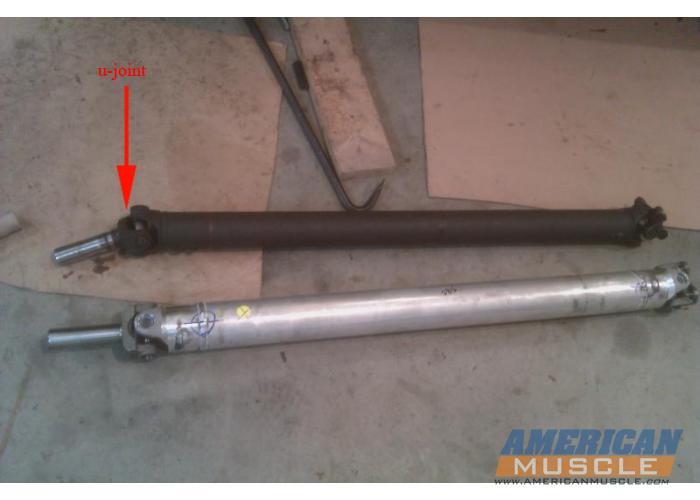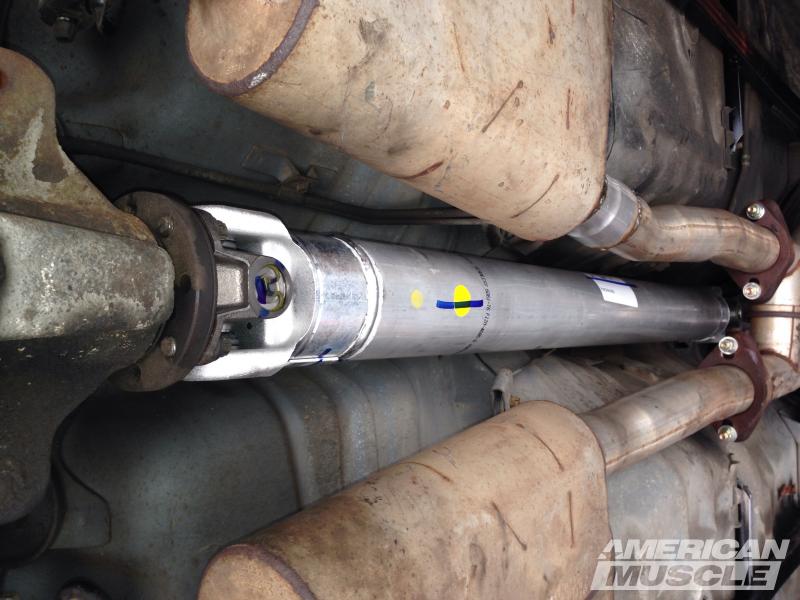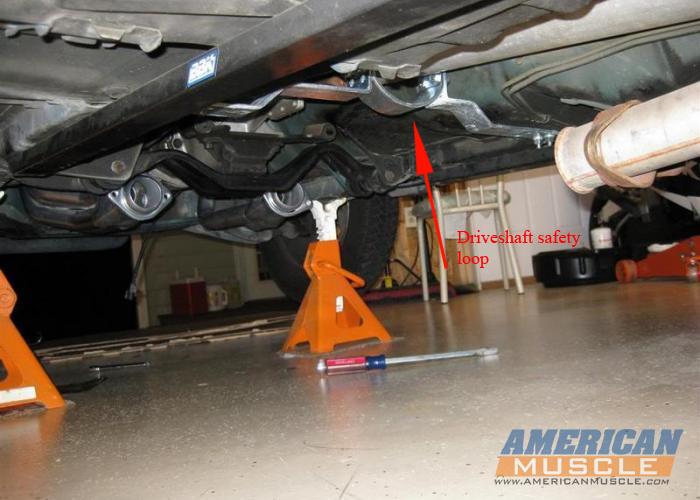There are a few reasons. First of all any aftermarket driveshaft will either be made of aluminum or carbon fiber, the most common (and financially achievable) being aluminum. The stock steel driveshaft weighs approximately 20 pounds, whereas a Ford Racing aluminum variant tips the scales at around 13.5 pounds for a savings of 6.5 lbs. On the surface that doesn’t seem like much. However, because the driveshaft is a rotating mass, a lighter driveshaft results in less rotating mass and thus allows for slightly greater acceleration.
Secondly, aluminum does a better job at vibration dampening, thus allowing for a smoother ride at all speeds, but particularly so at higher speeds. Furthermore, an aftermarket aluminum driveshaft is not only stronger than their steel counterpart, but stiffer too, meaning more efficient transfer of power to the wheels. To summarize:
- Less weight = less rotating mass; less rotating mass = greater acceleration
- Stronger: can handle more power
- Stiffer: can better transfer power
- Smoother: less vibration and noise
Now, carbon fiber driveshafts were mentioned, too. They offer all the same advantages as an aluminum driveshaft, but to an even greater extent. An aftermarket carbon fibre driveshaft is lighter, stronger and stiffer than aluminum, but also more costly!




